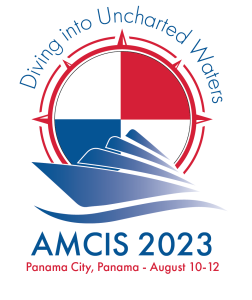Loading...
Paper Type
Complete
Description
The rise in distraction-related traffic accidents necessitates in-car infotainment systems that prioritize safety, as current systems often prioritize entertainment and convenience, contributing to the high number of distracted driving fatalities. Therefore, this paper applied a design science research approach to develop a design theory for Augmented Automotive Spaces that holistically consider safety, interface, interaction, and attention requirements. The main artifact is a design theory intended to help researchers and practitioners understand the design requirements and principles of intuitive, immersive, and attention-grabbing infotainment user interfaces that enhance safety and overall mobility experience. The design theory was further implemented in a prototypical reference scenario and positively evaluated for developmental usefulness, conciseness, explanatory power, and extendibility. Overall, the authors' work contributes to the research areas of user interface design, infotainment, automotive information systems, and safety measures as well as providing a comprehensive guideline for the development of immersive and safe automotive infotainment systems.
Paper Number
1555
Recommended Citation
Böhmer, Martin; Mahn, Victor-Alexander; Kuehnel, Stephan; and Damarowsky, Johannes, "Shaping the Future of Safety and Mobility Experience: A Design Theory for Augmented Automotive Spaces" (2023). AMCIS 2023 Proceedings. 4.
https://aisel.aisnet.org/amcis2023/sig_hci/sig_hci/4
Shaping the Future of Safety and Mobility Experience: A Design Theory for Augmented Automotive Spaces
The rise in distraction-related traffic accidents necessitates in-car infotainment systems that prioritize safety, as current systems often prioritize entertainment and convenience, contributing to the high number of distracted driving fatalities. Therefore, this paper applied a design science research approach to develop a design theory for Augmented Automotive Spaces that holistically consider safety, interface, interaction, and attention requirements. The main artifact is a design theory intended to help researchers and practitioners understand the design requirements and principles of intuitive, immersive, and attention-grabbing infotainment user interfaces that enhance safety and overall mobility experience. The design theory was further implemented in a prototypical reference scenario and positively evaluated for developmental usefulness, conciseness, explanatory power, and extendibility. Overall, the authors' work contributes to the research areas of user interface design, infotainment, automotive information systems, and safety measures as well as providing a comprehensive guideline for the development of immersive and safe automotive infotainment systems.
When commenting on articles, please be friendly, welcoming, respectful and abide by the AIS eLibrary Discussion Thread Code of Conduct posted here.



Comments
SIG HCI